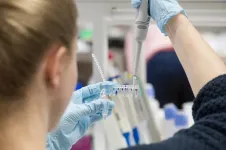Same nerve cell -- Different influence on food intake
Researchers reveal the diversity of our neurons
2021-05-19
(Press-News.org) The nerve cells, also called neurons, in our brain control all the basic processes of our body. For this reason, there are different types of neurons distributed over specific regions of the brain. Researchers at the Max Planck Institute for Metabolic Research and the CECAD Cluster of Excellence in Aging Research of the University of Cologne have developed an approach that allows them to show that neurons that are supposedly the same are actually very different: they not only sense different hormones for the body's energy state, but also have a different influence on food intake. This can have a direct effect on our metabolism, for example by differentially restraining our appetite.
The brain processes our sensory perceptions, controls our behaviour and stores our memories. Because of these many functions, different types of nerve cells with specific tasks exist in different regions of our brain. One such type of nerve cells are the so-called POMC neurons, which play an important role in the metabolism of our body. "POMC neurons are critically involved in the control of appetite, energy expenditure and metabolism," explains Nasim Biglari, a recently graduated PhD and first author of the study. "In recent years, it has been increasingly confirmed that POMC neurons are more diverse than previously thought." Such differences result, for example, from a different response to hormones secreted by the body and are only noticeable when individual POMC neurons are compared with each other. In such a case, scientists refer to different subtypes of neurons. "Whether the different subtypes also play a different role in metabolism has not been clarified so far," says Nasim Biglari.
Same nerve cell - different influence on food intake
"We have now succeeded in making different subtypes of neurons visible in mice at the genetic level and thus were able to subject them to more detailed investigation", says Nasim Biglari. "Using this new, genetic approach, we were able to describe two different subtypes of POMC neurons in detail for the first time. For example, our results show a different distribution of the two subtypes within the same specific brain region. Moreover, they sense different hormones for the body's energy state. The two subtypes even act differently on food intake, with one part of the POMC neurons suppressing appetite more potently than the other." Because of the influence of POMC neurons on metabolism and food intake, these observations could also be relevant to diseases such as obesity and diabetes.
"We were able to show for the first time that the diversity of POMC neurons is important for their function in the control of metabolism. In further experiments, we would like to increasingly address the questions of how the two subtypes of POMC neurons influence metabolism in detail and which neuronal circuits in the brain they engage to carry out their effects", Nasim Biglari is looking forward to future experiments. "More generally, however, the approach we have developed can also be used to identify cell subtypes in other organs and for other types of cells. This could lead to many more insights into the diversity of our body's cells."
INFORMATION:
Original publication
N. Biglari, I. Gaziano, J. Schumacher, J. Radermacher, L. Paeger, P. Klemm, W. Chen, S. Corneliussen, C. M. Wunderlich, M. Sue, S. Vollmar, T. Klo?ckener, T. Sotelo-Hitschfeld, A. Abbasloo, F. Edenhofer, F. Reimann, F. M. Gribble, H. Fenselau, P. Kloppenburg, F. T. Wunderlich und J. C. Bru?ning
Intersectional Targeting Reveals a Refined Microcircuit Architecture of Heterogenous, Glp1r- and Lepr-expressing POMC-Neurons.
Nature Neuroscience, 2021.
Published: 17 May 2021
[Attachments] See images for this press release:

ELSE PRESS RELEASES FROM THIS DATE:
2021-05-19
Traditionally, an infection is thought to happen when microbes - bacteria, fungi, or viruses - enter and multiply in the body, and its severity is associated with how prevalent the microbes are in the body.
Now, an international research team led by Nanyang Technological University, Singapore (NTU Singapore) has proposed a new way of understanding infections. Their study of close to 400 respiratory samples from patients with bronchiectasis, a chronic lung condition, has shown that microbes in the body exist as a network, and that an infection's severity could be a result of interactions between these microbes.
Through statistical modelling ...
2021-05-19
Among the large cast of microbiome players, bacteria have long been hogging the spotlight. But the single-celled organisms known as protists are finally getting the starring role they deserve.
A group of scientists who study the interactions between plants and microbes have released a new study detailing the dynamic relationships between soil-dwelling protists and developing plants, demonstrating that soil protists respond to plant signals much like bacteria do.
An enormous variety and diversity of microbes live in soil, and studying how these organisms interact with each ...
2021-05-19
For young plants, timing is just about everything. Now, scientists have found that herbivores, animals that consume plants, have a lot to say about evolution at this vulnerable life stage.
Once a plant seedling breaches the soil surface and begins to grow, a broad range of factors will determine whether it thrives or perishes.
Scientists have long perceived that natural selection favors early rising seeds. Seedlings that emerge early in the growing season should have a competitive advantage in monopolizing precious soil resources. Early growth also should mean more access to light, since early growers can block sunlight for seedlings that emerge later in the season.
Despite plenty of proof that germinating early is highly advantageous, many plants germinate ...
2021-05-19
LA JOLLA, CALIF. - May 19, 2021 - A study led by scientists at Sanford Burnham Prebys Medical Discovery Institute has identified a tumor marker that may be used to predict which breast cancer patients will experience resistance to endocrine therapy. The research offers a new approach to selecting patients for therapy that targets HER2, a protein that promotes the growth of cancer cells, to help avoid disease relapse or progression of endocrine-sensitive disease.
The study was published in the journal Nature Communications.
Nearly 80% of breast tumors are estrogen receptor (ER)-positive. For decades, ...
2021-05-19
Turns out the old adage, "monkey see, monkey do," does ring true -- even when it comes to cannabis use. However, when cannabis use involves youth it's see, think, then do, says a team of UBC Okanagan researchers.
The team found that kids who grow up in homes where parents consume cannabis will more than likely use it themselves. Parental influence on the use of cannabis is important to study as it can help with the development of effective prevention programs, explains Maya Pilin, a doctoral psychology student in the Irving K. Barber Faculty of Arts and Social Sciences.
"Adolescence is a critical period in which drug and alcohol experimentation takes place and when cannabis use is often initiated," says Pilin. "Parents are perhaps the most influential socializing agent for ...
2021-05-19
People with bipolar disorder may not take their medication because of side effects, fear of addiction and a preference for alternative treatment - according to research from Norfolk and Suffolk NHS Foundation Trust (NSFT) and the University of East Anglia (UEA).
Nearly half of people with bipolar disorder do not take their medication as prescribed leading to relapse, hospitalisation, and increased risk of suicide.
A new study, published today, reveals six key factors that stop people taking their medication as prescribed.
These include whether they are experiencing side effects, difficulties in remembering to take medication and a lack of support from family, friends and healthcare ...
2021-05-19
Researchers at the University of Eastern Finland have found a potential neuroprotective effect of a protein modification that could be a therapeutic target in early Alzheimer's disease. The new study investigated the role of MECP2, a regulator of gene expression, in Alzheimer's disease related processes in brain cells. The study found that phosphorylation of MECP2 protein at a specific amino acid decreases in the brain as Alzheimer's disease is progressing. Abolishing this phosphorylation of MECP2 in cultured mouse neurons upon inflammatory stimulation enhanced their viability and ...
2021-05-19
A study led by MedUni Vienna (Institute of Cancer Research and Comprehensive Cancer Center Vienna) sheds light on the mechanisms that lead to extremely aggressive metastasis in a particular type of pancreatic cancer, the basal subtype of ductal adenocarcinoma. The results contribute to a better understanding of the disease. The study has recently been published in the leading journal "Gut".
The most prevalent form of pancreatic cancer, Pancreatic Ductal AdenoCarcinoma (PDAC) is usually divided into two subtypes, a classical subtype and a basal subtype. The latter is highly aggressive and tends towards early metastasis. One of the distinguishing features between the two subtypes is that the classical subtype exhibits the protein GATA6. This is no longer present ...
2021-05-19
Water in the high-mountain regions has many faces. Frozen in the ground, it is like a cement foundation that keeps slopes stable. Glacial ice and snow supply the rivers and thus the foothills with water for drinking and agriculture during the melt season. Intense downpours with flash floods and landslides, on the other hand, pose a life-threatening risk to people in the valleys. The subsoil with its ability to store water therefore plays an existential role in mountainous regions.
But how can we determine how empty or full the soil reservoir is in areas that are difficult to access? Researchers at the German Research Centre for Geosciences (GFZ), together with colleagues from Nepal, have now demonstrated an elegant method to track groundwater dynamics in high ...
2021-05-19
The latest findings show that with clever science, a single fingerprint left at a crime scene could be used to determine whether someone has touched or ingested class A drugs.
In a paper published in Royal Society of Chemistry's Analyst journal, a team of researchers at the University of Surrey, in collaboration with the National Centre of Excellence in Mass Spectrometry Imaging at the National Physical Laboratory (NPL) and Ionoptika Ltd reveal how they have been able to identify the differences between the fingerprints of people who touched cocaine compared with those who have ingested the drug - even if the hands are not washed. The smart science behind the advance is the mass spectrometry imaging tools applied to the detection of cocaine ...
LAST 30 PRESS RELEASES:
[Press-News.org] Same nerve cell -- Different influence on food intake
Researchers reveal the diversity of our neurons







